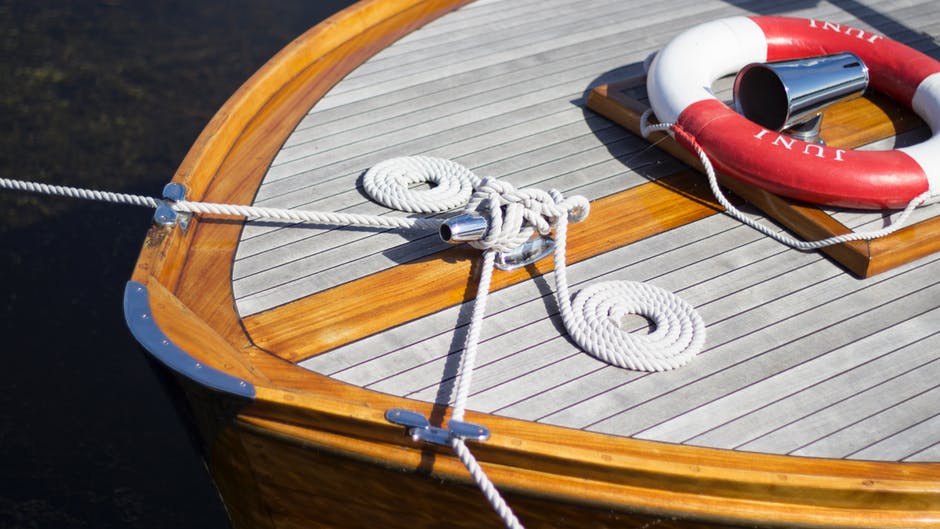As 280,000 boat owners in the U.S. know, a clean boat is a happy boat.
Not to mention, a clean boat also equals a happier, prouder captain.
The thing is, boat cleaning isn’t always straightforward. This is especially true if you’re a new boat owner.
You may wonder how to remove water stains without causing damage or which areas are safe to scrub.
Here we’re breaking down five cleaning tips to keep in mind to keep your boat in great shape.
Boat Cleaning Equipment
When cleaning a boat, a few pieces of equipment are required before you begin. These include:
- Buckets (one for soapy water and one for rinsing)
- Wash mitt (note that a washcloth can be abrasive)
- Water hose
- Long handle scrub brush
- Drying towel to avoid water spots
- Paint-safe soap
- Buffer ball
- Wax or sealant
This is a small list to get you started depending on how big your cleaning project is. If you’re also looking to do your interior, consider that you may need a vacuum and/or microfiber cloths to wipe down your instrument panels.
These tools are useful for regular boat maintenance in the future, so an initial investment goes a long way.
Be Mindful With Soap
For boat cleaning, it’s important to know that all soaps aren’t equal. For instance, regular household soaps can have pH levels that can damage paint or waxes.
This is why looking for a soap made for cleaning boats will save you time and costs. These soaps will help gently remove stains while also preserving protective surface gels.
In addition, avoid letting any soap dry on your boat by rinsing immediately. Dried soap can damage wax and paint by creating tiny scratches.
Try scrubbing small areas at a time and rinsing as you go.
Hard Water Stain Removal
Hard water stains are a given on boat surfaces. You’ll likely notice them below and along your water line.
Hard water stains occur due to excess minerals in the water, specifically calcium carbonate or lime. When water drops dry on your boat, they harden into residue that is very difficult to remove.
To remove these, you’ll likely need acid-based removers such as hard water removers or even diluted vinegar in water. Make sure to rinse these products off immediately after wiping away the stains.
And (this is key) be sure to thoroughly dry your boat immediately after rinsing to avoid new hard water spots.
Scrub Strategically
First things first: before you begin scrubbing your hull or deck, make sure you rinse down your boat first. Scrubbing any surface of your boat while it’s dry can cause damage.
Next, remember that it’s best to scrub from the top down. This saves you rinsing time.
You can also wash your hull and deck with the same soap. Some boat owners decide to use bleach on their decks, but this can be extremely toxic and may also cause damage.
During this process, don’t forget to scrub and rinse off the motor, motor mounts, and the prop area. These areas can accumulate debris and corrosive salt, so get into their nooks and crannies.
Take Care of Your Teak
Caring for a boat with teak means taking a little extra time to make sure the wood is protected and maintains its rich color.
Begin by gently washing with the soap you used to clean your hull and deck. Then rinse, dry, and apply teak oil.
If your wood looks worn or its color is lackluster, try rubbing it gently with sandpaper first. You don’t want to buff like crazy, just a little rub.
Then, wash, rinse, allow the wood to dry, and apply your teak oil.
Get Waxy
After your boat has dried, you may want to consider giving it a fresh coat of wax. It isn’t necessary to wax after every cleaning, but you should aim to add a new coat 1-2 times a season.
Waxing helps protect your paint and other surfaces from debris and damage, making boat maintenance easier.
Consider using high-quality carnauba wax, and applying a few coats after washing and drying.
Dry Ice Blasting: Better Boat Cleaning in Less Time
As you can see, it can take at least a full day to clean your boat thoroughly (and this doesn’t even include the interior).
Sometimes, a better option for deep boat cleaning is dry ice blasting.
Dry ice blasting is a high-pressure technique that uses air to shoot out carbon dioxide pellets at high speed.
Yes, this sounds like it would be abrasive, but the opposite is true. These dry ice pellets turn into carbon dioxide gas after coming into contact with the surface of your boat, causing no damage.
How Does Dry Ice Blasting Work?
This non-toxic technique uses compression and sublimation to cause particles like algae and barnacles to fall off your boat.
When the high-speed dry ice particles hit dirt or other debris, they crack the debris to weaken it while transforming into natural gas. This creates a mini explosion that causes the debris to fall away.
Unlike sandblasting and pressure washing, which can cause damage to wood elements, dry ice blasting causes no damage, requires no cleanup, is non-toxic, and cleans your boat in half the time.
Dry Ice Blasting Near Me
At Raw Restoration Blasting, we specialize in dry ice blasting and remediation for boat cleaning. This is a non-abrasive cleaning option that cuts cleaning time, which equals reduced costs.
In addition, dry ice blasting is one of the most environmentally friendly ways to clean your boat. It doesn’t require chemicals, water, or abrasives, which keeps things green.
Contact us here to return your boat to sparkling.

